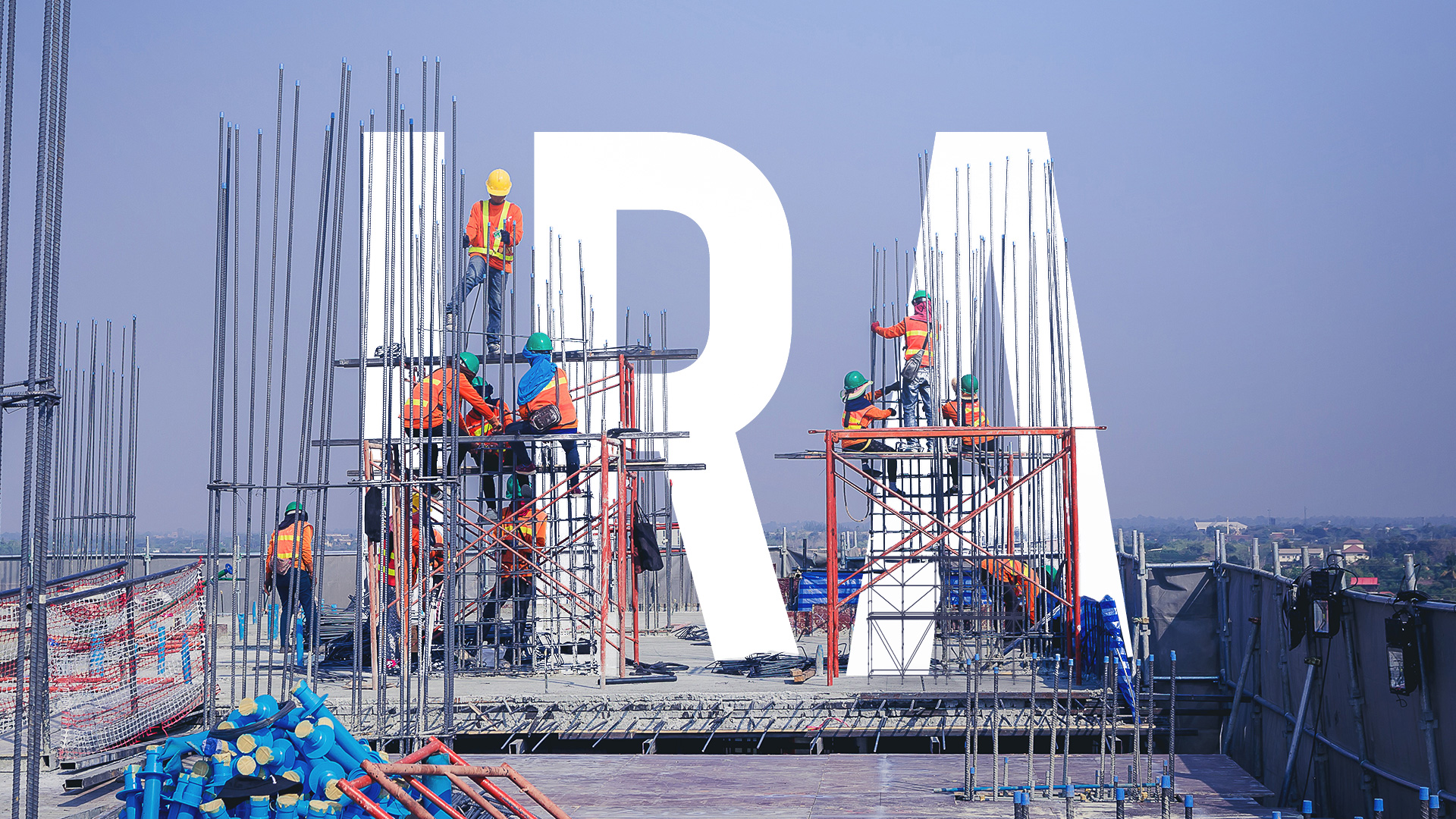
Passage of the Inflation Reduction Act reveals the power that can arise when the movements for worker protection, climate protection, and justice protection join forces.
The fossil fuel industry, the Republican Party, conservative fossil-fuel Democrats, and right-wing ideologues combined to block the climate, labor, and social justice programs of the Green New Deal and Build Back Better. They almost succeeded. But at the last minute, the combined power of climate protectors, worker advocates, and justice fighters was enough to force passage of the Inflation Reduction Act, the most significant climate legislation in U.S. history.[1]
That power was enough to include important positive elements in the Inflation Reduction Act. It will provide the largest climate protection investment ever made. It will create an estimated 1 to 1.5 million jobs annually for a ten-year period.[2] It includes modest but significant funding to address pollution in frontline communities.[3]
But the power of the fossil fuel industry and its allies was still enough to gut important parts of a program for climate, jobs, and justice – and to add provisions that promote injustice and climate change. The legislation includes only one-quarter of the investment necessary to meet the Paris climate goals and prevent the worst consequences of global warming. It allows much of its funding to be squandered on unproven technologies that claim to reduce greenhouse gas emissions but whose primary effect may simply be to permit the continued burning of fossil fuels – and enrich their promoters. It allows increased extraction of fossil fuels, especially on federal lands. It allows massive drilling and pipeline construction that will turn areas like the Gulf Coast and Appalachia into de facto “sacrifice zones” where expanded fossil fuel infrastructure will devastate the environment – and the people. It does not guarantee that the jobs it creates will be good jobs. It makes few “just transition” provisions for workers and communities whose livelihoods may be threatened by the changes it will fund.
How the Labor-Climate Movement Can Fix the IRA

The IRA is not an adequate solution to our climate, jobs, and injustice crises. But as working people face lacerating wounds from climate change, social injustice, pandemic, inflation, and recession, a band-aid is better than an open wound. The IRA gives us an opportunity to start the healing of our life-threatening social lacerations.
The climate, labor, and justice activism that forced passage of the IRA reveals a shift in the overall balance of forces. The here-and-now reality of the climate crisis, combined with the deterioration in real life conditions for ordinary people, has weakened those who have denied our crises and has empowered those determined to address them. The labor-climate movement can now take advantage of that shift to counteract the weaknesses of the IRA and start building our own worker-friendly, just, climate-safe world at every level from the local to the global.
Here are some priorities:
Dig where you stand
The substantial funds available from the IRA make it possible for activists to start creating jobs and countering injustice by immediately initiating projects in our communities, cities, and states. Programs can include renewable energy, energy efficiency, phasing out fossil fuel use, housing, healthcare, and other human needs. State and local governments can start phasing out fossil fuel use by requiring utilities to make annual reductions in their greenhouse gas pollution. Such efforts can build on initiatives already under way to create a veritable “Green New Deal from Below.”[4]
Protect threatened communities
The IRA, astonishingly, provides for an increase in oil and gas exploration leasing on federal lands, causing environmental disaster in Texas and Louisiana while actually increasing greenhouse gas pollution. As part of the deal made to win Senator Joe Manchin’s support, Democratic party leaders agreed to support the environmentally destructive Mountain Valley natural gas pipeline through Virginia and West Virginia. But, as the successful struggle against the Keystone XL pipeline revealed, such fossil fuel infrastructure projects can be halted by a combination of lawsuits, national, state, and local legislation, and direct action. For example, this August 12 a federal judge in Montana District Court halted all coal leasing on federal lands pending analysis of its environmental impacts.[5] Blocking fossil fuel leasing, infrastructure construction, and other such destructive aspects of the IRA should be a top priority for the labor-climate movement.
Spend on real, not false, solutions
Major programs in the IRA, including the Greenhouse Gas Reduction Fund, the Clean Energy Investment and Production Tax Credits, and the Clean Energy Loan Guarantees could be used to fund very different technologies.[6] There will undoubtedly be major struggles over how these funds will actually be used. To align the needs for climate, jobs and justice:[7]
- Start now with technologies that are available, cost-effective, and job effective. That is likely to mean renewable energy and energy efficiency, which can provide 90% of power generation by 2030. The faster emissions are reduced, the less need there will be for costly technologies with harmful side effects.
- Accept scientific criteria for cost, safety, waste disposal, and jobs in evaluating all climate programs, including nuclear power, carbon capture and sequestration, pollution permit programs, and taxes.
- Include all costs, including, safety, health, and other forms of pollution, and collateral costs and benefits, in all evaluations.
- Include all job benefits, for jobs of all kinds all along the skill and wage spectrum, in evaluations. Research other technologies that may be useful for the more-difficult-to-eliminate 10% of GHG emissions, such as some high-temperature manufacturing and air and sea transportation. Do not invest in implementation until the full benefits of renewable energy and energy efficiency have been realized. Carefully plan, sequence, and phase in programs according to both social and climate needs. After GHG emissions have been halted, explore cost-effective techniques for removing existing GHGs from the atmosphere. While mechanical means for achieving this, such as carbon capture and storage, have been proposed, such means are unlikely to be cost-effective relative to natural carbon sinks like properly managed trees and soils.
Recruit and train the new climate workforce
The IRA will provide jobs for 1-1½ million workers. This will require a massive effort to recruit and train them for the highly diverse forms of work that will be needed. That provides an enormous opportunity to create job training, access, and advancement ladders for those people and communities who have been excluded from good jobs and just access to the labor market. It also allows jobs to be provided for the relatively small number of workers who may lose jobs from the reduction in fossil fuel use. The new jobs should be earmarked for these two groups in particular. Specific recruitment, preference, training, and job ladder policies will be needed to make that happen.
Enforce labor rights and standards
The IRA potentially provides subsidies to a wide range of industries and companies. This provides unprecedented leverage for requiring decent employment conditions and the right to organize for workers in a wide swath of the economy.[8] Such provisions can be required by administrative policy for all contracts that receive funding under the IRA. Unions, climate protectors, and allies should join together to demand such policies, including:
- Require federal standards mandating project labor agreements.
- Establish a minimum wage that guarantees a living wage.
- Require that contractors pay the prevailing wage.
- Implement the elements of the PRO Act to ensure workers’ rights to organize.
- Prevent employers from interfering with workers’ rights to organize.
Provide a just transition for workers and communities
Local, state, and federal policies should provide jobs, livelihoods, and community resources when fossil-fuel burning is reduced. Such programs should include:[9]
- Community and worker protection funds should be established that collect money before facilities are closed to replace taxes and fees paid by fossil-fuel facilities and to invest in good jobs in affected communities before and during transitions.
- Workers harmed by climate protection policies should receive full wages and benefits for at least four years; up to four years of education or training, including tuition and living expenses; and decent pensions with health care for those ready to retire.
- Workers who seek a new career path should receive income replacement with either a four-year college education or vocational job training with living expenses provided, as well as assistance with dependent care, mortgage and other debt relief, transportation costs, and other areas of economic pressure for workers in transition. Such education and training should start preemptively long before workers are laid off.
- Communities adversely affected by climate protection policies should be targeted for funding for economic development investments through regional commissions and authorities. These can include projects that enhance workforce competitiveness, remediate damage done by fossil fuel extraction, build and repair infrastructure, and increase community capacity like broadband projects, clean drinking water, organic farming, and energy efficiency.
Use the power of executive action
While further federal legislation to expand the positive aspects of the IRA are desperately needed, in the meantime we can move forward by combining sub-federal action with executive action that does not require legislation by Congress. President Joe Biden should immediately issue a Declaration of Climate Emergency, which will permit wide use of executive powers for job creation and reduction in inequality through climate protection. He should expand the use of the Defense Production Act, which he has already invoked for climate protection measures, to force corporations to do the right thing along a broad front of climate emergency necessities. Using emergency and Defense Production Act powers, the president can initiate a wide range of policies necessary to address the crises of inequality, job shortage and degradation, and climate catastrophe.
Passage of the IRA, despite its drawbacks and limitations, represents a huge opportunity for the labor-climate movement. It can provide the basis for an unprecedented people’s mobilization for climate, labor, and justice. That is what it will take to provide a sustainable future for ourselves and our posterity. That future hangs in the balance.
[1] For an overall evaluation of the provisions of the NRA see “Let’s Acknowledge Inflation Reduction Act’s Significance — and Its Inadequacy,” Truthout, August 9, 2022 (Interview with Robert Pollin by C.J. Polychroniou)
[2] For varying estimates of NRA job creation see “Let’s Acknowledge Inflation Reduction Act’s Significance” and “Labor Energy Partnership Analysis Shows Inflation Reduction Act Will Add Nearly 1.5 Million Jobs to the Economy,” AFL-CIO, August 9, 2022 https://aflcio.org/press/releases/labor-energy-partnership-analysis-shows-inflation-reduction-act-will-add-nearly-15
[3] For differing evaluations of funding for environmental justice in the IRA, see “Inflation Reduction Act Commits Just $47 Billion to Environmental Justice, Activists Say,” Inside Climate News, August 9, 2022. https://insideclimatenews.org/todaysclimate/inflation-reduction-act-commits-just-47-billion-to-environmental-justice-activists-say/?utm_source=InsideClimate+News&utm_campaign=66fe9bd39e-&utm_medium=email&utm_term=0_29c928ffb5-66fe9bd39e-327490529
[4] See commentaries on the Green New Deal from Below: https://www.labor4sustainability.org/strike/
[5] “CITIZENS FOR CLEAN ENERGY, et al., Plaintiffs and THE NORTHERN CHEYENNE TRIBE,
Plaintiff, vs. U.S. DEPARTMENT OF THE INTERIOR, et al.”
https://earthjustice.org/sites/default/files/files/coal_leasing_moratorium_-_22-08-12_order.pdf
[6] “Let’s Acknowledge Inflation Reduction Act’s Significance,” Ibid.
[7] For further discussion of criteria for funding climate protection programs and technologies, see Jeremy Brecher, “Can Carbon Capture Save Our Climate – And Our Jobs?” Labor Network for Sustainability https://www.labor4sustainability.org/files/LNS_CarbonCapture_06082021.pdf
[8] For more on labor rights and standards in climate legislation see Jeremy Brecher, “Making ‘Build Back Better’ Better,” Labor Network for Sustainability https://labor4sustainability.org/files/MakingBuildBackBetter_.pdf
[9] For more on just transition policies, see Jeremy Brecher, “How to Protect Workers While Protecting the Climate,” Labor Network for Sustainability https://www.labor4sustainability.org/just-transition/how-to-protect-workers-while-protecting-the-climate/